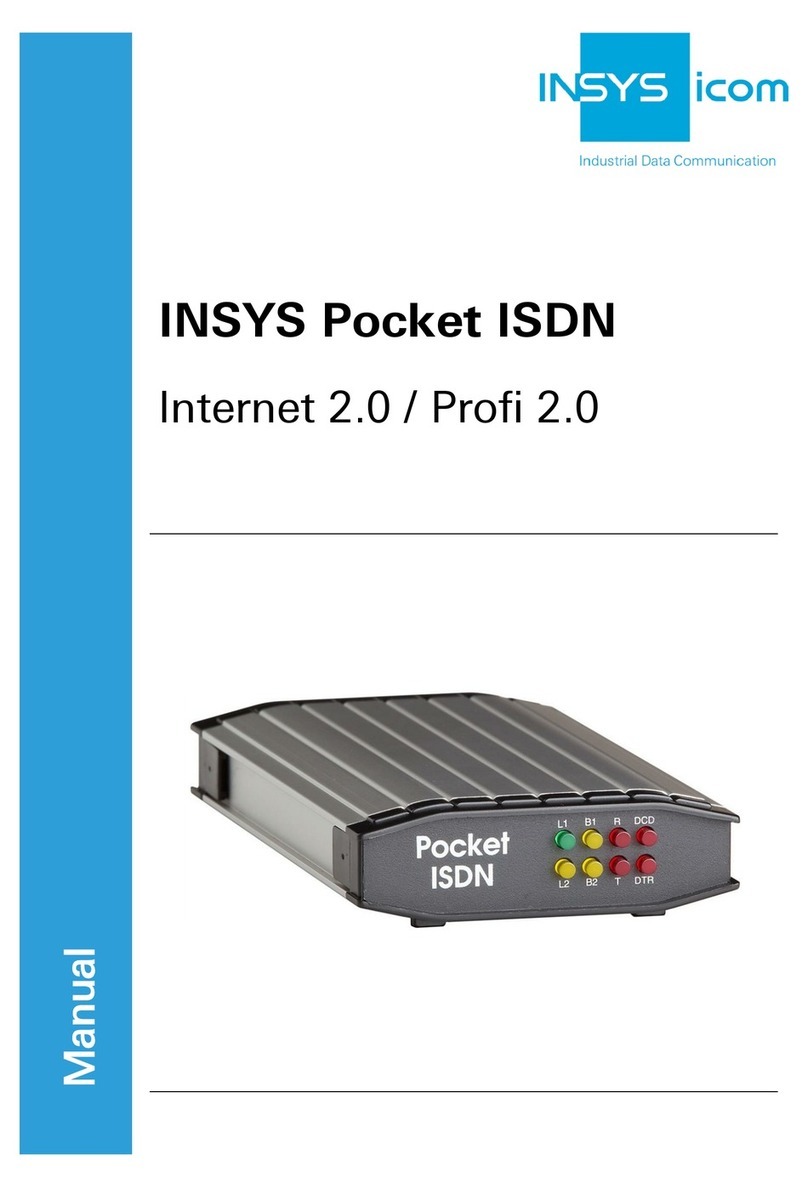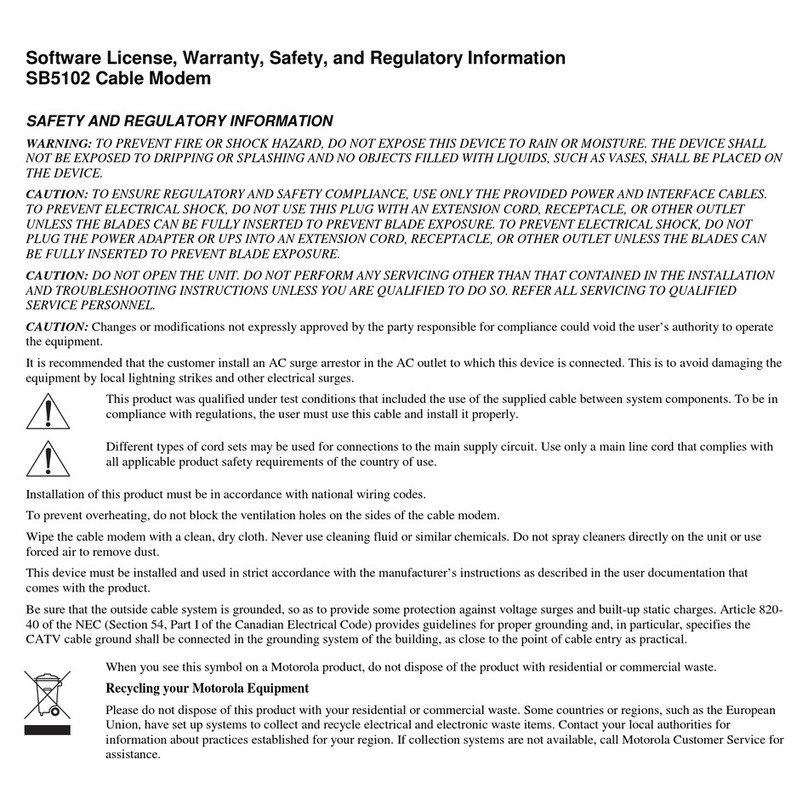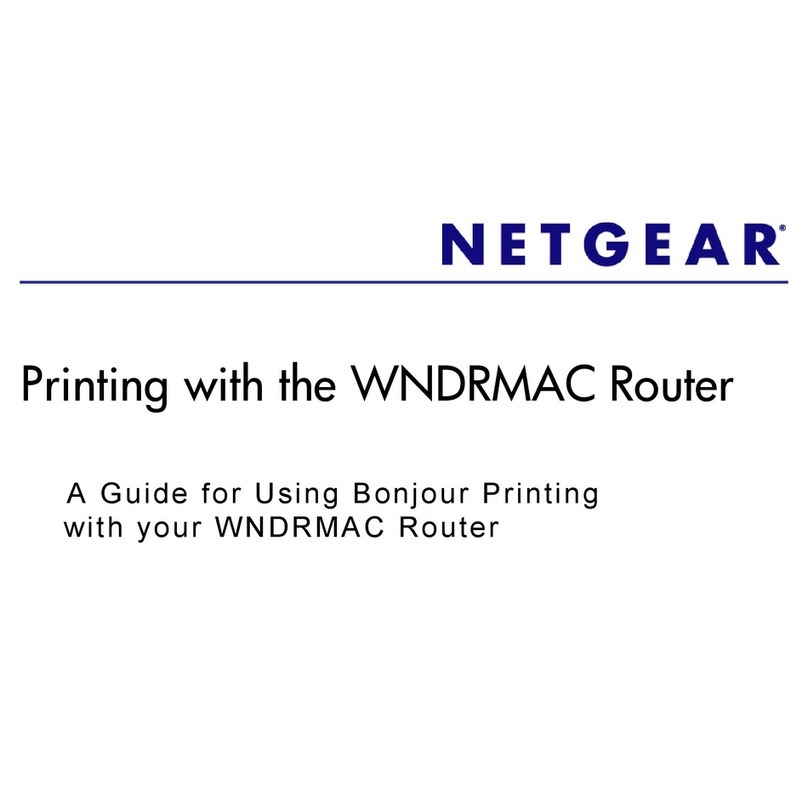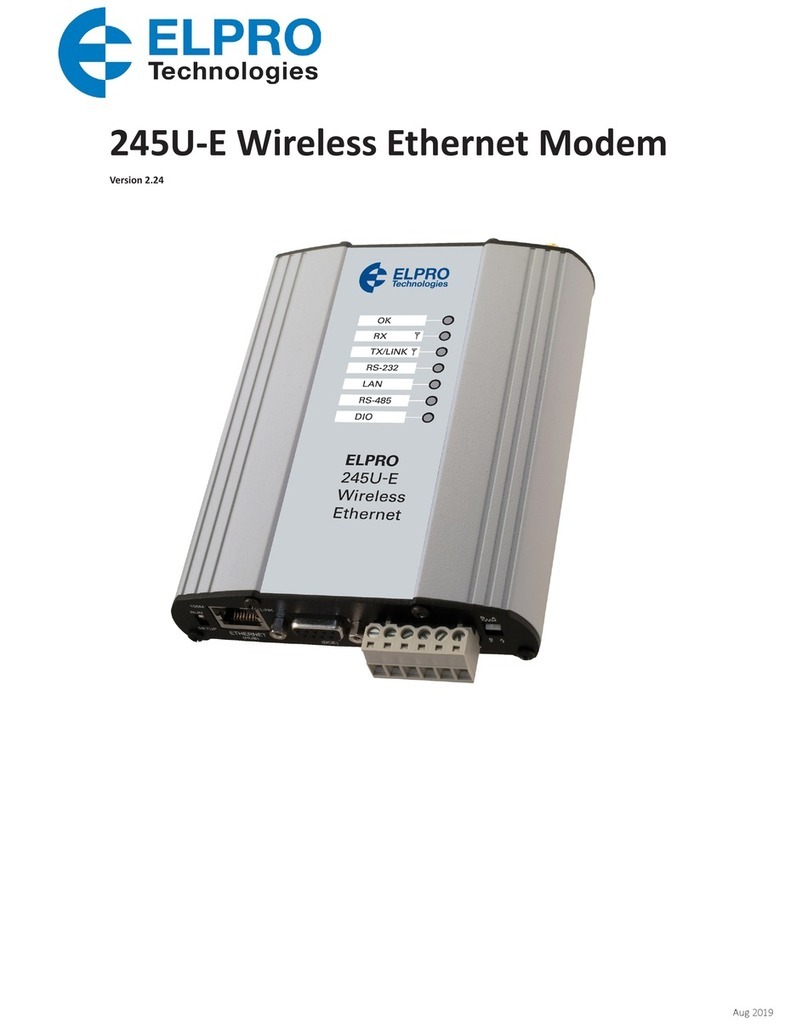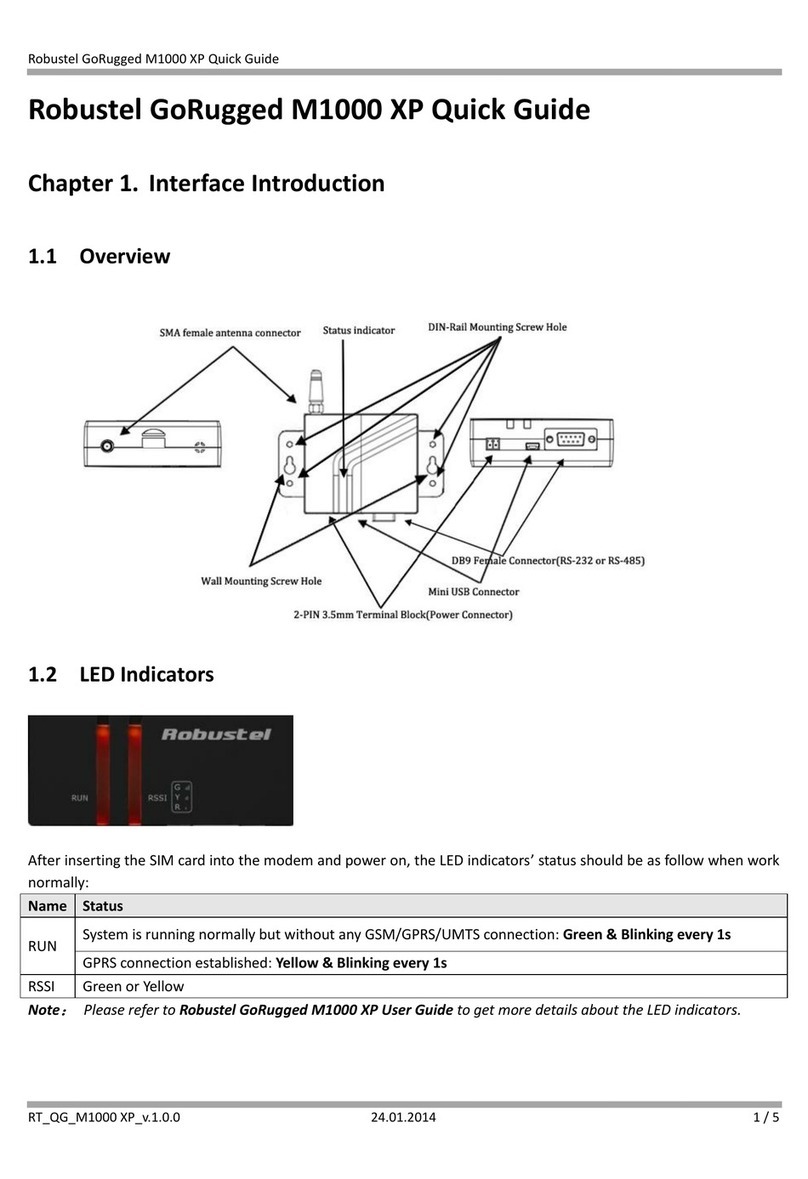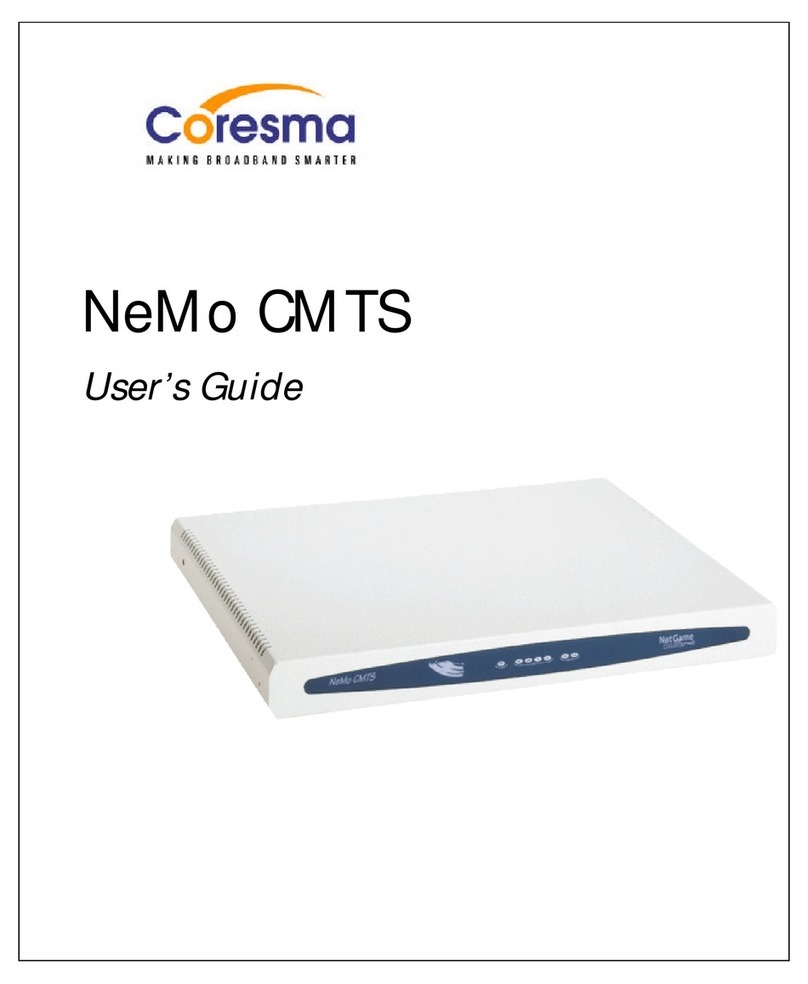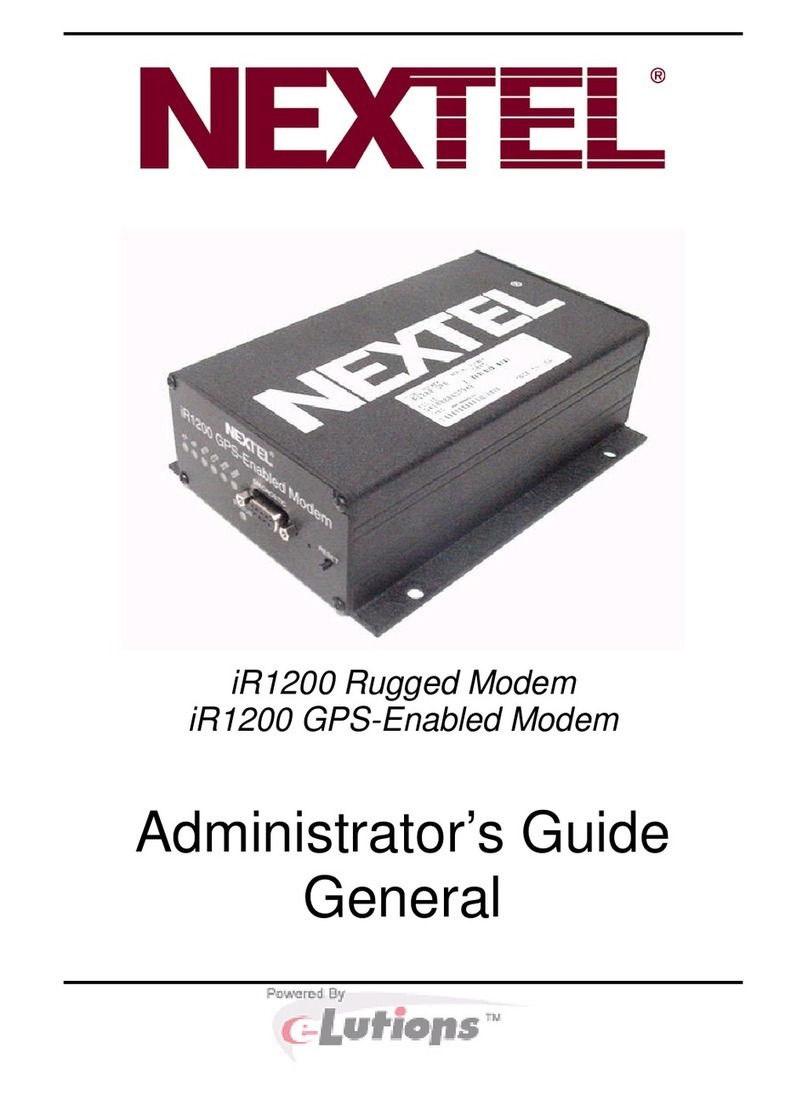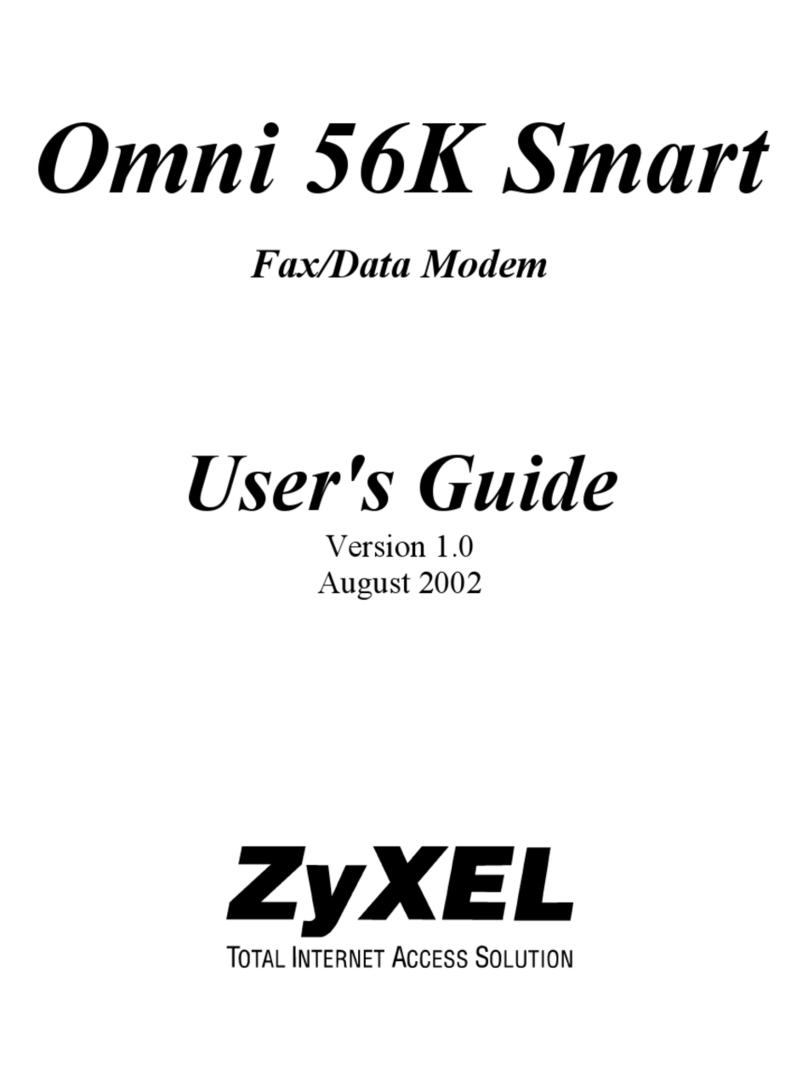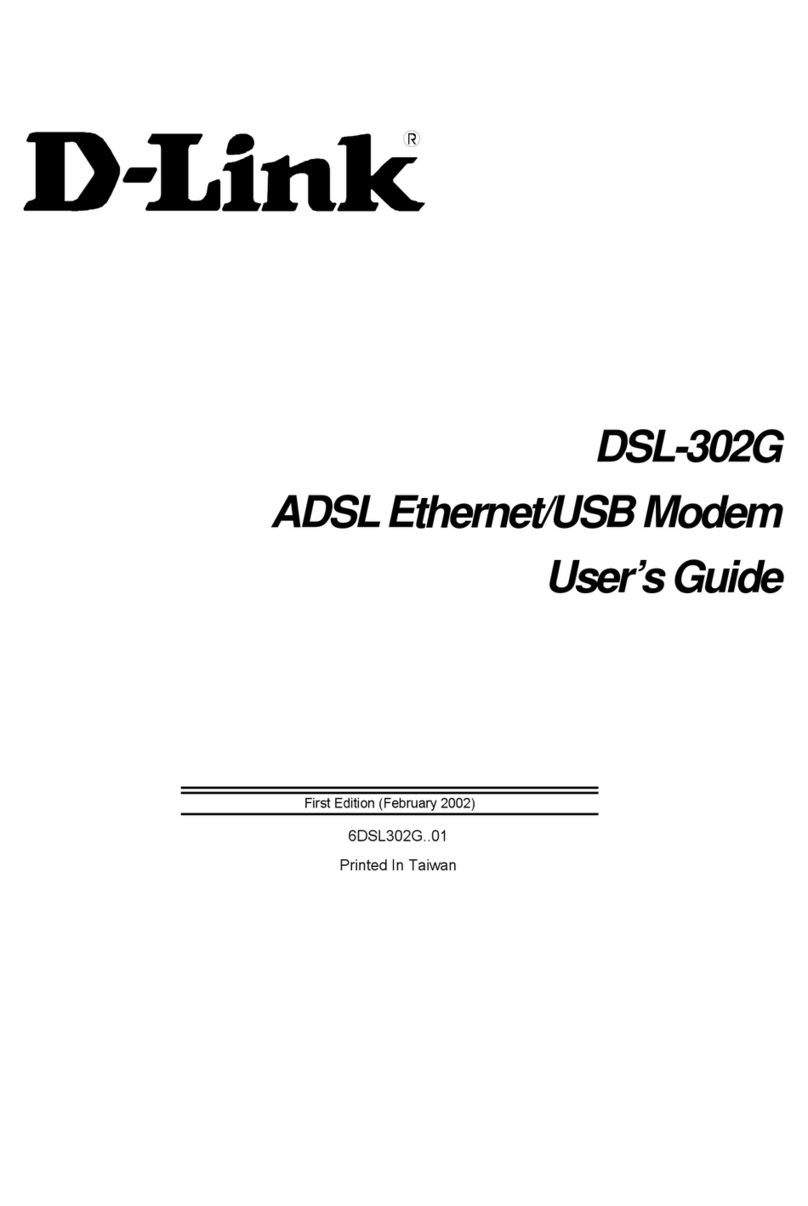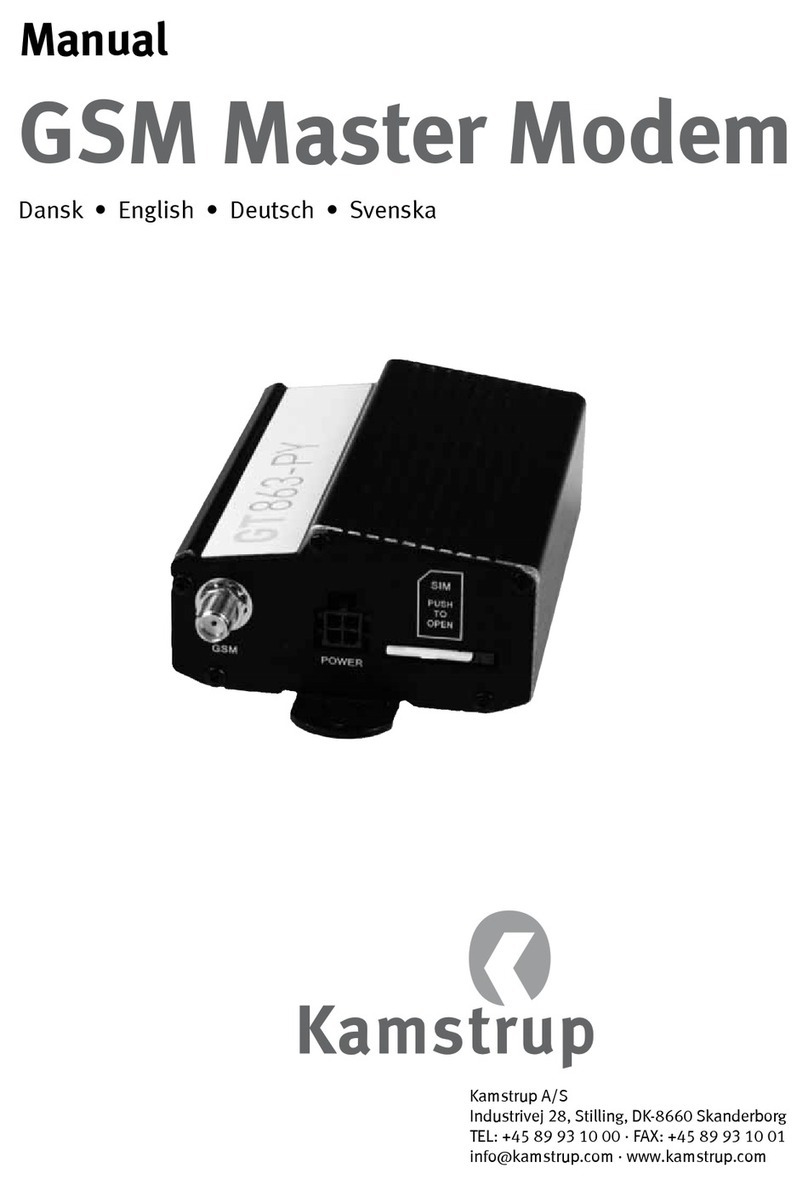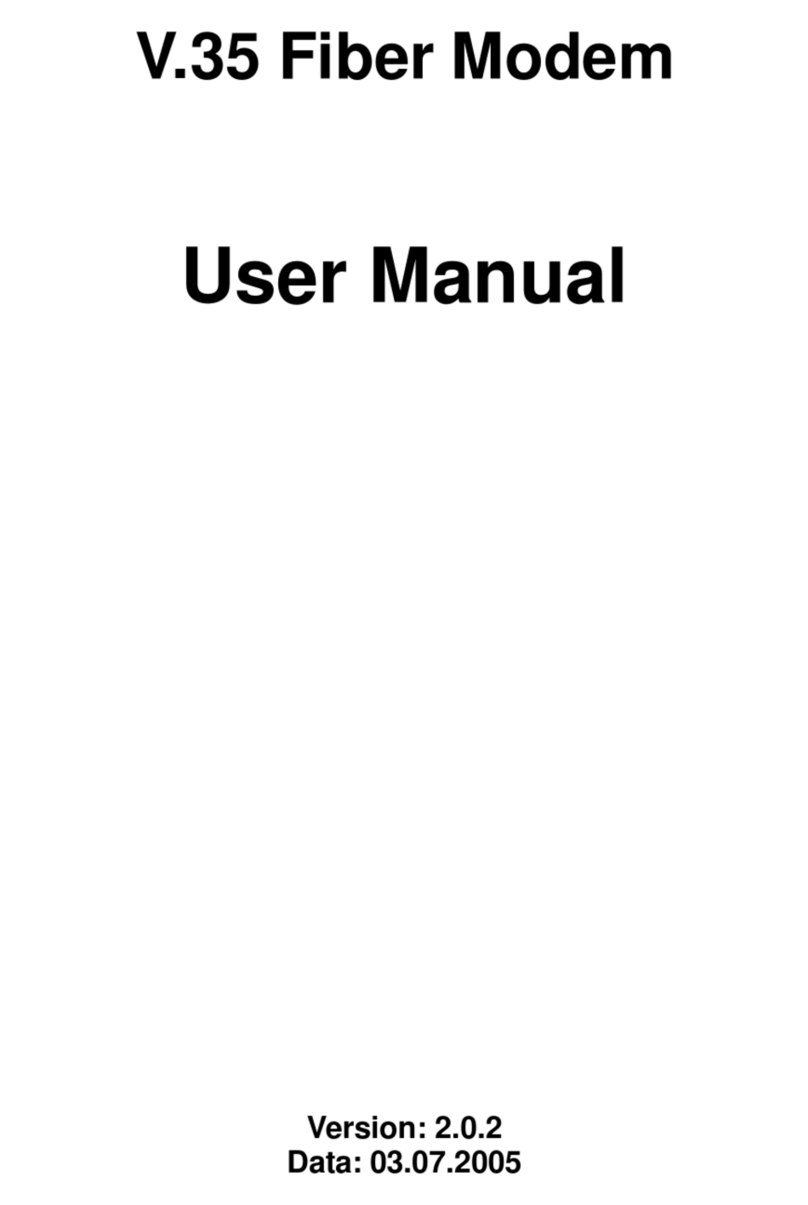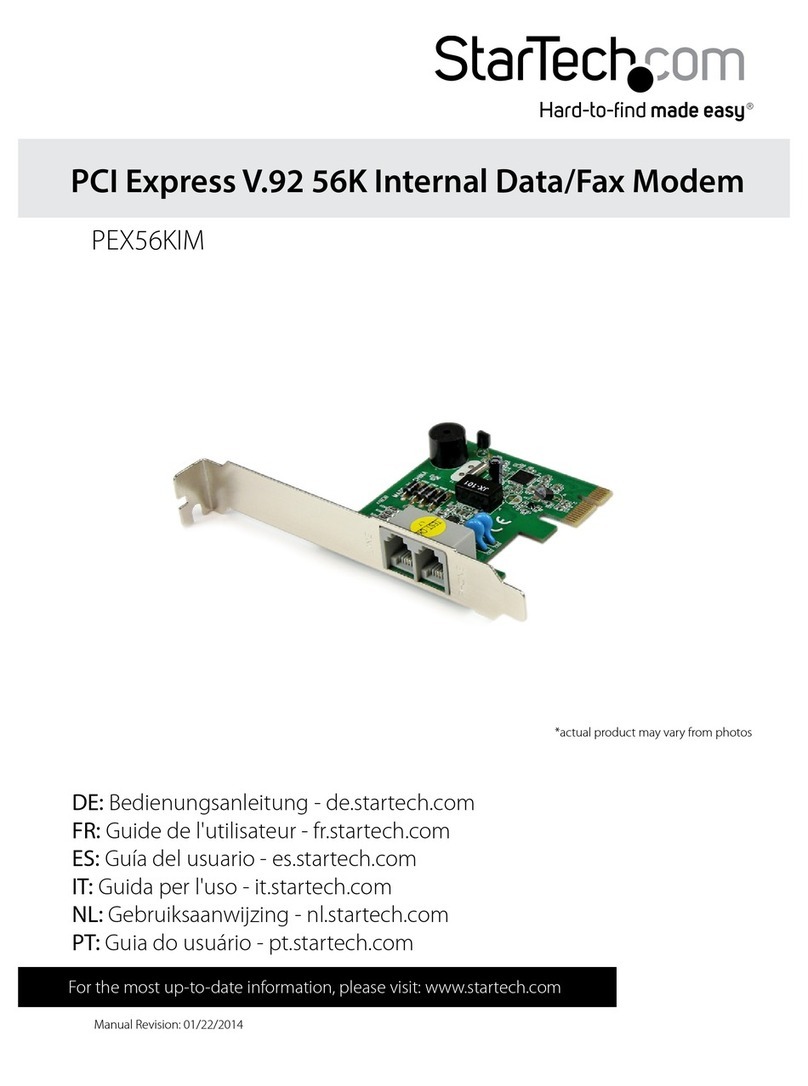insys icom i-modul 336 LL User manual

Designer's Guide
i-modul Modem 336 LL
3.0


Copyright © July 12 INSYS MICROELECTRONICS GmbH
Any duplication of this manual is prohibited. All rights on this documentation and
the devices are with INSYS MICROELECTRONICS GmbH Regensburg.
Trademarks
The use of a trademark not shown below is not an indication that it is freely avail-
able for use.
MNP is a registered trademark of Microcom Inc.
IBM PC, AT, XT are registered trademarks of International Business Machine Cor-
poration.
INSYS®, e-Mobility LSG® and e-Mobility PLC® are registered trademarks of INSYS
MICROELECTRONICS GmbH.
Windows™ is a registered trademark of Microsoft Corporation.
Linux is a registered trademark of Linus Torvalds.
Publisher:
INSYS MICROELECTRONICS GmbH
Hermann-Köhl-Str. 22
D-93049 Regensburg, Germany
Phone: +49 941 58692 0
Fax: +49 941 58692 45
E-mail: [email protected]
Internet: http://www.insys-icom.com
Date: Jul-12
Item: 31-22-04.031
Version: 1.0
Language: EN

Content
1Technical Data .........................................................................................6
1.1 Physical Features...................................................................................................6
1.2 Technological Features..........................................................................................7
2Connections.............................................................................................8
2.1 PCB Layout............................................................................................................8
2.2 Pin Layout Terminal Strip P1 .................................................................................9
2.3 Pin Layout Terminal Strip P2 .................................................................................9
3Function Overview .................................................................................10
4Meaning of the Symbols and the Formatting in this Manual..................12
5Operating Principle ................................................................................13
5.1 Operation with the Terminal Program..................................................................13
6Functions ...............................................................................................15
6.1 Automatic Baud Rate Detection ..........................................................................15
6.1.1 Serial Connection ................................................................................... 15
6.1.2 Phone connection .................................................................................. 16
6.2 Bit Direct Mode ...................................................................................................16
6.3 Data Flow Control (Handshake) ...........................................................................17
6.3.1 Hardware data flow control (RTS/CTS) .................................................. 17
6.3.2 Software data flow control (XON/XOFF) ................................................ 18
6.4 Data Compression ...............................................................................................19
6.5 Data Buffer for Serial Data Transmission .............................................................20
6.6 Error correction....................................................................................................21
6.7 IO Tunneling and Connection Safeguard .............................................................22
6.8 Set Two-Wire or Four-Wire Operation .................................................................23
6.9 Adjusting the Transmission Level ........................................................................23
6.10 Set the Operating Modes Answer or Originate ....................................................24
6.11 Digital inputs .......................................................................................................25
6.12 Control output .....................................................................................................25
6.13 Switching on the Remote Configuration..............................................................26
6.14 Remote Configuration of the i-modul Modem 336 LL 3.0 ...................................27
6.15 Reset ...................................................................................................................28
7Maintenance ..........................................................................................29
8AT Command Reference........................................................................32
8.1 AT Messages .......................................................................................................48
9S Registers.............................................................................................51
9.1 Overview S Registers...........................................................................................51
9.2 Description S Registers .......................................................................................52
4Jul-12

Contents
Jul-12 5
10 CE/EMC Compliant Integration ..............................................................61
10.1 Your Application ..................................................................................................61
10.2 Application Interface / Terminal Strip P1 .............................................................61
10.3 Network Interface / Terminal Strip P2 (for Modem /ISDN)...................................61
10.4 Antenna Connection (if equipped) .......................................................................62
10.5 Further Recommendations ..................................................................................62
10.6 Reference Documents .........................................................................................62
11 Declaration of Conformity......................................................................63
12 Tables and Diagrams..............................................................................64
12.1 List of Tables .......................................................................................................64
12.2 List of Diagrams ..................................................................................................64
13 Index......................................................................................................65

Technical Data i-modul Modem 336 LL
1Technical Data
1.1 Physical Features
All specified data was measured with nominal input voltage, at full load, and an ambient
temperature of 25 °C. The limit value tolerances are subject to the usual variations.
Physical Feature Value
Operation voltage VCC +5 V (± 5%) DC
HIGH level alarm input VIH > 2 V (max. VCC)
LOW level alarm input VIL < 0.8 V
HIGH level alarm output VOH
(3.3 V CMOS compatible)
> 2.4 V
LOW level alarm output VOL < 0.4 V
Input current of GND to internal VCC Typically 0.5 mA
Maximum output current for state LOW
IOLmax
1,6 mA
Maximum output current for state HIGH
IOHmax
100 µA
Input voltage (TTL) VIL < 0.8 V
VIH > 2 V (max. VCC)
Output voltage (TTL) VOL < 0.4 V
VOH > 2.4 V (3.3 V CMOS compatible)
Total current consumption in idle approx. 200 mA
Total current consumption in active state approx. 240 mA
Total maximum current consumption approx. 400 mA
Weight approx. 25 g
Dimensions (Length x Width x Height) 56.4 mm x 56.4 mm x 14 mm
Height of the terminal strip above PCB 6.5 mm
PCB thickness 1.6 mm
Temperature range 0°C – 70°C
Maximum permissible humidity 95% non-condensing
Table 1: Physical Features
6

i-modul Modem 336 LL Technical Data
1.2 Technological Features
Technological Feature Description
Supported data compression standards
MNP-5, V.42 bis; V.44
Modulation standards Bell standard 103/212, V.32 bis, V.32,
V.23, V.22, V.22 bis, V.21, V.34+, V.34
Error correction standards V.42, MNP-4, LAPM
Table 2: Technological Features
7

Connections i-modul Modem 336 LL
2Connections
2.1 PCB Layout
Figure 1: PCB layout, terminal strip and fixing hole position
Item Type Description
P1 SAMTEC TW series 2-row 2 mm
pitch or Fischer SLY 81 24 Z
Serial interface, inputs and outputs
P2 SAMTEC TW series 2-row 2 mm
pitch or
Plastron PQFZ-04S-VK-024 or
Fischer SLY 4
Phone network interface
Table 3: Specification and assignment of the terminal strips
8

i-modul Modem 336 LL Connections
2.2 Pin Layout Terminal Strip P1
Pin Type Signal Description
1 GND Ground of supply voltage (ground)
2 Supply VCC 5V DC supply voltage
3 GND Ground of supply voltage (ground)
4 Input TXD Transmit signal from the terminal of the RS232 line; TTL level
5 GND Ground of supply voltage (ground)
6 Output RXD Receive signal from the RS232 line; TTL level
7 Output ID-PIN2 Ground
8 Input RTS~ Request to Send; TTL level (RS232 signal)
9 Output ID-PIN1 GND
10 Output CTS~ Clear To Send; TTL level (RS232 signal)
11 Input RESET~ RESET, TTL level, tmin = 3 s
12 Input DTR~ Data Terminal Ready; TTL level (RS232 signal)
13 Output OH~ Off Hook
14 Output DCD~ Data Carrier Detect; TTL level (RS232 signal)
15 Output RI~ Ring Signal TTL level (RS232 signal)
16 Output DSR~ Data Set Ready; TTL level (RS232 signal)
17 Output UA Switch output; TTL level
18 Input UE Alarm input; TTL level
19 Output UA2 Switch output 2; TTL level
20 Input UE2 Alarm input 2; TTL level
21 Not connected
22 Not connected
23 Not connected
24 Not connected
Table 4: Terminal strip connections description, terminal strip P1
The tilde "~" behind the signal description indicates that this signal is "low
active".
2.3 Pin Layout Terminal Strip P2
Pin Signal Description
1 Phone signal b1 Leased line for 2-wire operation
Transmit line for 4-wire operation
2 Phone signal b2 Receive line for 4-wire operation
3 Phone signal a1 Leased line for 2-wire operation
Transmit line for 4-wire operation
4 Phone signal a2 Receive line for 4-wire operation
Table 5: Terminal strip connections description, terminal strip P2
9

Function Overview i-modul Modem 336 LL
3Function Overview
The i-modul Modem 336 LL 3.0 offers the following functions:
Automatic baud rate detection
In configuration mode, the i-modul Modem 336 LL 3.0 can automati-
cally adjust the data transmission rate at the serial interface.
Data buffer for serial data transmission
The i-modul Modem 336 LL 3.0 has a fast send and receive buffer
(cache) to adjust the modem to the operating speed of the applica-
tion.
Bit direct mode
The i-modul Modem 336 LL 3.0 can forward incoming data without
having any influence on their transmission format.
Hardware and software data flow control
The i-modul Modem 336 LL 3.0 can transmit to the application via the
control lines of the serial interface to interrupt the dataflow, if the
buffers of the i-modul Modem 336 LL 3.0 exceed a certain level. An
application can also prompt the i-modul Modem 336 LL 3.0 via a con-
trol line to interrupt the data flow. As an alternative, the i-modul Mo-
dem 336 LL 3.0 can control the data flow via XOFF/XON characters in
the data stream.
Error correction
The i-modul Modem 336 LL 3.0 has the following error correction pro-
tocols: V.42, MNP-2, MNP-3, MNP-4, and MNP-10
Storing the settings in the user profiles
The i-modul Modem 336 LL 3.0 can store the user settings in two dif-
ferent "profiles". This means that two different configurations can be
stored for special purposes and loaded as needed.
IO tunneling
The input states of the i-modul Modem 336 LL 3.0 in answer mode
are directly output to the outputs of the connected i-modul Modem
336 LL 3.0 in originate mode, and vice versa. The inputs states are
transmitted crosswise between the devices. In addition, the input and
output states of the i-modul Modem 336 LL 3.0 can be queried via AT
command.
10

i-modul Modem 336 LL Function Overview
Configuration for the operation in originate or answer mode
As factory default, the i-modul Modem 336 LL 3.0 is usually pre-
initialized for the operation in originate or answer mode. Each i-modul
Modem 336 LL 3.0 can still be switched from one operating mode to
the other one via AT commands.
Configuration for the operation in two-wire or four-wire mode
The i-modul Modem 336 LL 3.0 can be switched from two-wire mode
to four-wire mode via AT commands.
11

Meaning of the Symbols and the Formatting in this
Ml
i-modul Modem 336 LL
4Meaning of the Symbols and the Formatting in
this Manual
This section describes the definition, formatting and symbols used in this manual.
The various symbols are meant to help you read and find the information relevant
to you. The following text is structured like a typical operating instruction of this
manual.
Bold print: This will tell you what the following steps will result in
After that, there will be a detailed explanation why you could perform the
following steps to be able to reach the objective indicated first. You can decide
whether the section is relevant for you or not.
An arrow will indicate prerequisites which must be fulfilled to be able to process
the subsequent steps in a meaningful way. You will also learn which software or
which equipment you will need.
1. One individual action step: This tells you what you need to do at this point. The
steps are numbered for better orientation.
A result which you will receive after performing a step will be marked with
a check mark. At this point, you can check if the previous steps were
successful.
Additional information which you should consider are marked with a
circled "i". At this point, we will indicate possible error sources and tell you
how to avoid them.
Alternative results and steps are marked with an arrow. This will tell you how
to reach the same results performing different steps, or what you could do if
you didn't reach the expected results at this point.
12

i-modul Modem 336 LL Operating Principle
5Operating Principle
This chapter describes the basic procedures to operate and configure an i-modul Modem
336 LL 3.0. In general, the i-modul Modem 336 LL 3.0 is configured and operated via AT
commands. You can enter these commands yourself with the help of a terminal program
and the AT command reference.
5.1 Operation with the Terminal Program
In general, any terminal program can be used. We recommend the program Ter-
aterm from T.Teranishi. It is available free of cost on the Internet at
http://hp.vector.co.jp/authors/VA002416/teraterm.html. You can use the program
"minicom" if you work in a Linux environment.
Note
Damage of the serial interface!
A possible direct connection of the serial interface of the
i-modul Modem 336 LL 3.0 with a typical RS232 interface
of a PC overloads components of the module due to the
higher voltage levels.
Use an RS232 level converter (e.g. MAX232) to adjust
both interface types correctly.
Configuring and operating the i-modul Modem 336 LL 3.0 with a terminal program
How to configure and operate the i-modul Modem 336 LL 3.0 with a terminal
program.
The i-modul Modem 336 LL 3.0 is connected to the PC and supplied with power.
A terminal program is installed on the PC.
1. Start your terminal program.
2. Select the serial port, to which your i-modul Modem 336 LL 3.0 is connected.
COM1 under Windows corresponds to /dev/ttyS0 under Linux.
3. Connect the Reset input with GND for 1 second.
The i-modul Modem 336 LL 3.0 changes into configuration mode.
The message NO CARRIER is displayed in the terminal program.
4. Type the character string AT into the terminal program. Complete the entry by
pressing the Enter key.
Each command input starts with AT and is completed with the Enter key.
13

Operating Principle i-modul Modem 336 LL
The i-modul Modem 336 LL 3.0 replies with
OK.
If the i-modul Modem 336 LL 3.0 does not respond, this may have three
probable reasons:
a) the i-modul Modem 336 LL 3.0 is switched off or
b) the i-modul Modem 336 LL 3.0 is not in configuration mode or
c) the i-modul Modem 336 LL 3.0 is connected to another serial port. Check it
and repeat step 2.
5. Configure the i-modul Modem 336 LL 3.0 using AT commands.
A reference of the AT commands can be found in the chapter "AT
Command Reference".
6. Save your entries with AT&W.
Not all configurations at the i-modul Modem 336 LL 3.0 need to be saved
actively by entering AT&W. Some settings are automatically saved
immediately. We still recommend sending the command AT&W to the i-
modul Modem 336 LL 3.0 as your last configuration step to ensure that all
settings are stored safely and are available for the next restart.
7. Enter ATZ.
You will receive the reply OK.
Alternatively, connect the Reset input with GND for 1 second.
After a short time, the i-modul Modem 336 LL 3.0 establishes the
connection to the remote terminal again and you get the response OK.
14

i-modul Modem 336 LL Functions
6Functions
6.1 Automatic Baud Rate Detection
6.1.1 Serial Connection
The automatic baud rate detection enables a continuous automatic adjustment of all
parameters (baud rate, data format) of the serial interface at the i-modul Modem 336 LL
3.0 in configuration mode. The device will detect during the operation in configuration
mode, which baud rate and which data format is applied to the serial interface. If this
setting is stored, the i-modul Modem 336 LL 3.0 will restore the stored interface configu-
ration after a restart. With each incoming AT command (according to the character
string "AT"), the parameters for the interface of the i-modul Modem 336 LL 3.0 will be
checked and adjusted, if necessary.
The function is active as default.
Configuration with AT commands
In order to change the i-modul Modem 336 LL 3.0 to configuration mode,
press the reset key for one second. The i-modul Modem 336 LL 3.0 reacts on
AT commands in this mode. Otherwise, AT commands entered via the termi-
nal program are considered as incoming data and forwarded to the remote
terminal. If no entry is made for more than 120 seconds in configuration
mode, the i-modul Modem 336 LL 3.0 returns to online mode.
To set a baud rate at the serial interface of the
i-modul Modem 336 LL 3.0, enter an AT com-
mand in configuration mode or simply
AT
Store the baud rate using the command AT&W
15

Functions i-modul Modem 336 LL
6.1.2 Phone connection
The automatic negotiation of the baud rate and the modulation standard enables the i-
modul Modem 336 LL 3.0 to negotiate the largest possible connection speed to the re-
mote terminal while the connection is established. The speed depends on the settings
and the abilities of the modem at the remote terminal. Via the modulation standard, the
connection speed can be set through the phone line. If nothing is defined, the i-modul
Modem 336 LL 3.0 will automatically try to determine the optimum connection parame-
ters.
The function is active as default.
Configuration with AT commands
To configure the modulation standard and
thus the connection speed, use the command AT+MS=<modulation>
Please find the possible parameters for this command in the Chapter "AT
Command reference".
To display the current settings AT+MS?
For a list of possible parameter of the com-
mand, enter AT+MS=?
6.2 Bit Direct Mode
For special applications, the buffering of the i-modul Modem 336 LL 3.0 can be deacti-
vated using the setting "unbuffered, bit direct". All data is forwarded without buffering
and further influence of the i-modul Modem 336 LL 3.0. This applies especially to the
parity and stop bits. The error correction and the data compression are in this case
switched off as well. If the i-modul Modem 336 LL 3.0 is operated in this mode, not all
functions will be available. The remote configuration and all functions for which a pass-
word is required, will no longer be available. This mode should only be used for special
character framings.
Configuration with AT commands
To deactivate the buffer of the i-modul Mo-
dem 336 LL 3.0 and to switch on the bit direct
mode, use the command:
AT\N1
16

i-modul Modem 336 LL Functions
6.3 Data Flow Control (Handshake)
The data flow control ensures that the data transfer is interrupted as soon as the modem
buffer exceeds a certain level. Two data flow control options are available: Via the con-
trol lines RTS and CTS, or via the control characters XON/XOFF which are inserted into
the data stream.
6.3.1 Hardware data flow control (RTS/CTS)
The hardware data flow control works in two directions. When the critical buffer level is
exceeded, the modem will set the CTS line to "LOW" and will thus indicate to the applica-
tion to interrupt the dataflow. When the buffer is emptied sufficiently for the i-modul
Modem 336 LL 3.0 to be able to receive data again, the CTS line is set to "HIGH". Re-
versely, the application can also indicate to the i-modul Modem 336 LL 3.0 to interrupt
the data flow. This is done via the RTS line. If it is set to "LOW", the modem will interrupt
the data flow to the application. The application will set it to "HIGH" to request data from
the i-modul Modem 336 LL 3.0.
The data flow control with RTS/CTS behavior is active by default.
Configuration with AT commands
To switch the data flow control on and to set
the type to RTS/CTS, use: AT&K3
To switch the data flow control off, use: AT&K0
17

Functions i-modul Modem 336 LL
6.3.2 Software data flow control (XON/XOFF)
When the input buffer of the modem exceeds a certain fill state, the modem will insert
an XOFF character into the data stream to the application. This character will cause the
application to send no more data. It will depend on the according application software if
the XON/XOFF data flow control is supported.
After the input buffer of the modem is emptied so much that data can be received again,
the modem will send an XON character to the application. This character will cause the
application to send data to the modem again. Analogously, the application can insert
XON/XOFF characters into the data stream to switch the data flow on and off. The
XON/XOFF data flow control is only available when the transmitted data do not contain
the characters XON or XOFF, which usually appear only in actual ASCII texts (7 bit). When
binary data (programs, etc.) are transmitted, or in the XMODEM transmission protocol,
for example, occasionally appearing XON or XOFF characters would disturb the opera-
tion.
Configuration with AT commands
To switch the data flow control on and to set
the type to XON/XOFF, use: AT&K4
To switch the data flow control off, use: AT&K0
18

i-modul Modem 336 LL Functions
6.4 Data Compression
The i-modul Modem 336 LL 3.0 supports various data compression types. During the
connection setup, it will automatically detect the type of data compression used by the
remote terminal, or it is set to a certain type of data compression. Data compression is
only available for error corrected connections. To be able to use data compression, both
sides (sender and recipient) must be able to at least recognize and support the same data
compression mode.
The default setting is the automatic selection of MNP-5 and V.42.bis and V.44 data com-
pression (AT%C3).
Configuration with AT commands
To select the compression type, use: AT%C<n>
To completely switch off the compression, use
the following commands: AT%C0
AT+DS44=0
To select the MNP-4 compression: AT%C1
To select the V.42 bis and V.44 data compres-
sion if they are switched on (see below): AT%C2
To select the V.42 bis and MNP-5 data com-
pression if V.42.bis compression is switched on
(see below): AT%C3
To switch on V.42 bis compression: AT%C2
To switch on V.44 compression: AT+DS44=3
To switch off V.42 bis compression: AT%C0
To switch off V.44 compression: AT+DS44=0
19

Functions i-modul Modem 336 LL
6.5 Data Buffer for Serial Data Transmission
The i-modul Modem 336 LL 3.0 has send and receive buffers. These buffers prevent the
loss of data, in case the application or the remote terminal can not receive data at this
time. The data buffer can be deactivated together with the error correction (bit direct
mode). When the buffer is activated, the data flow control should be active to avoid a
buffer overflow in the i-modul Modem 336 LL 3.0. If the buffer overflows, the data gets
lost. If the buffer overflows, the data gets lost. Operation without a buffer and error cor-
rection is only useful for special character framings.
The function is active as default.
Configuration with AT commands
To deactivate the error correction as well as
the buffer in the i-modul Modem 336 LL 3.0
for applications with special data format, use
the command
AT\N1
To deactivate only the error correction, use the
command AT\N0
20
Other manuals for i-modul 336 LL
2
Table of contents
Other insys icom Modem manuals
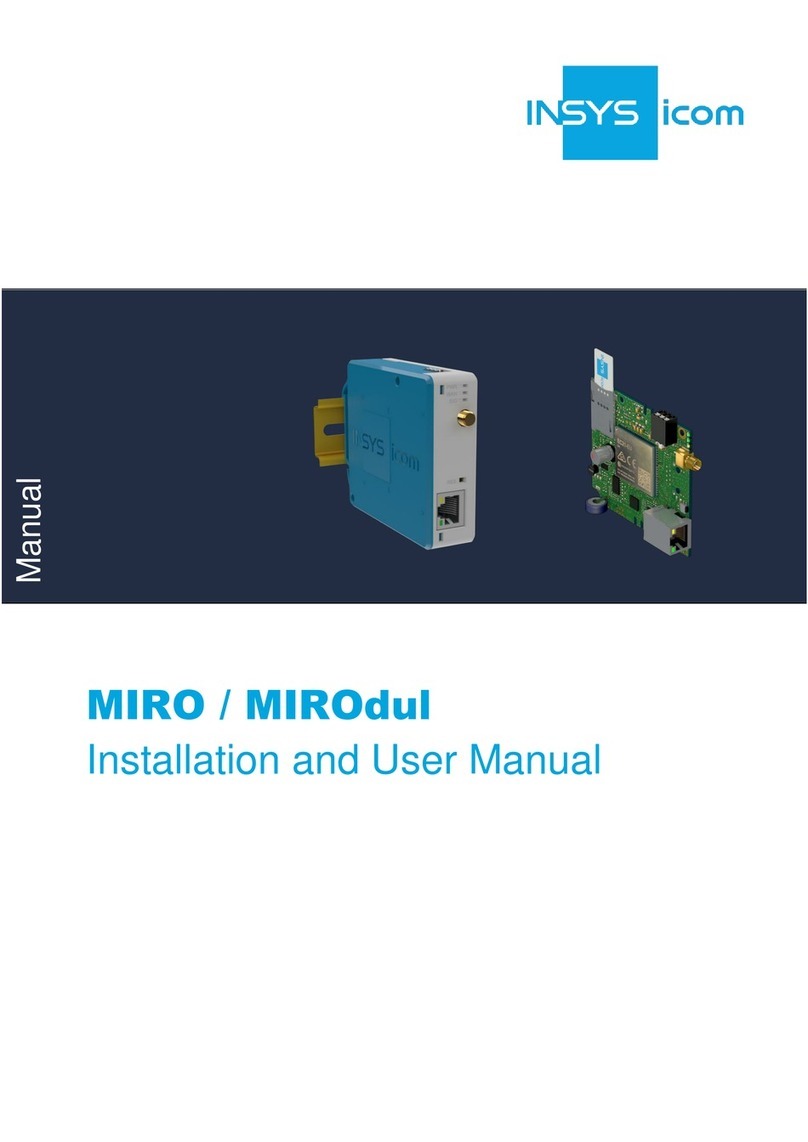
insys icom
insys icom MIRO User manual
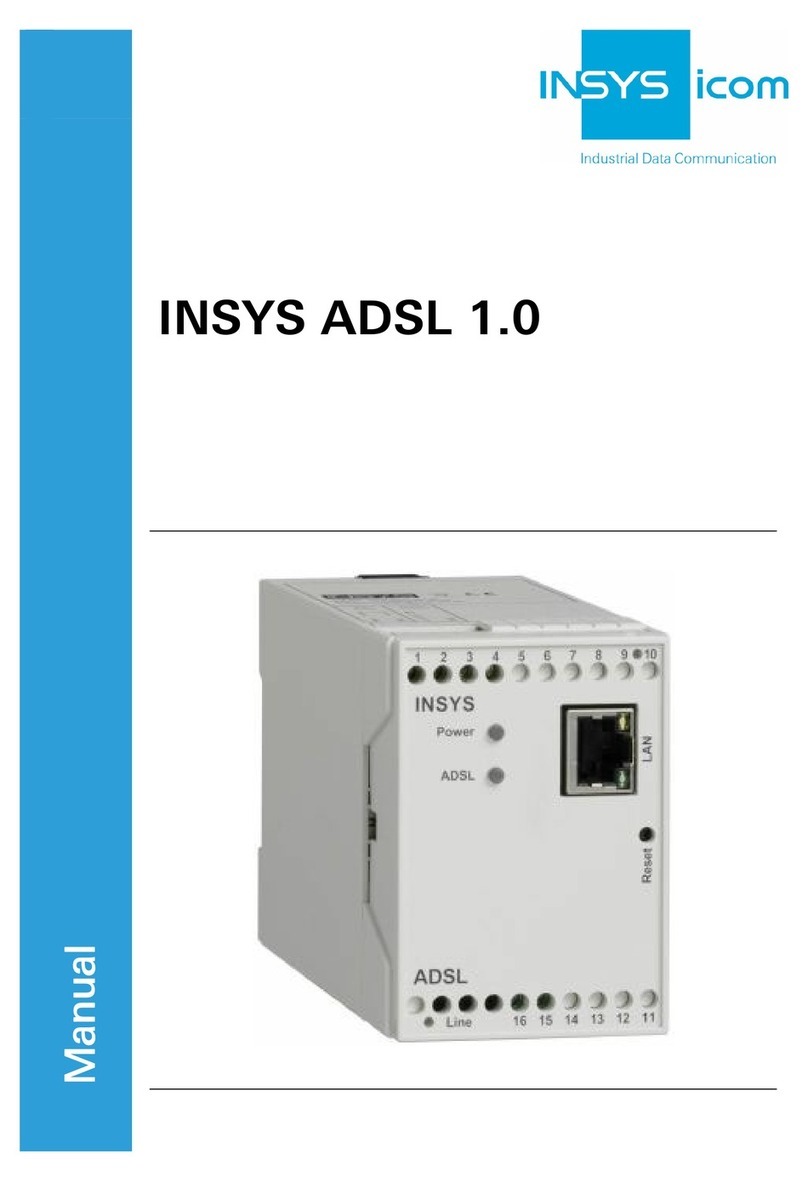
insys icom
insys icom ADSL 1.0 Series User manual
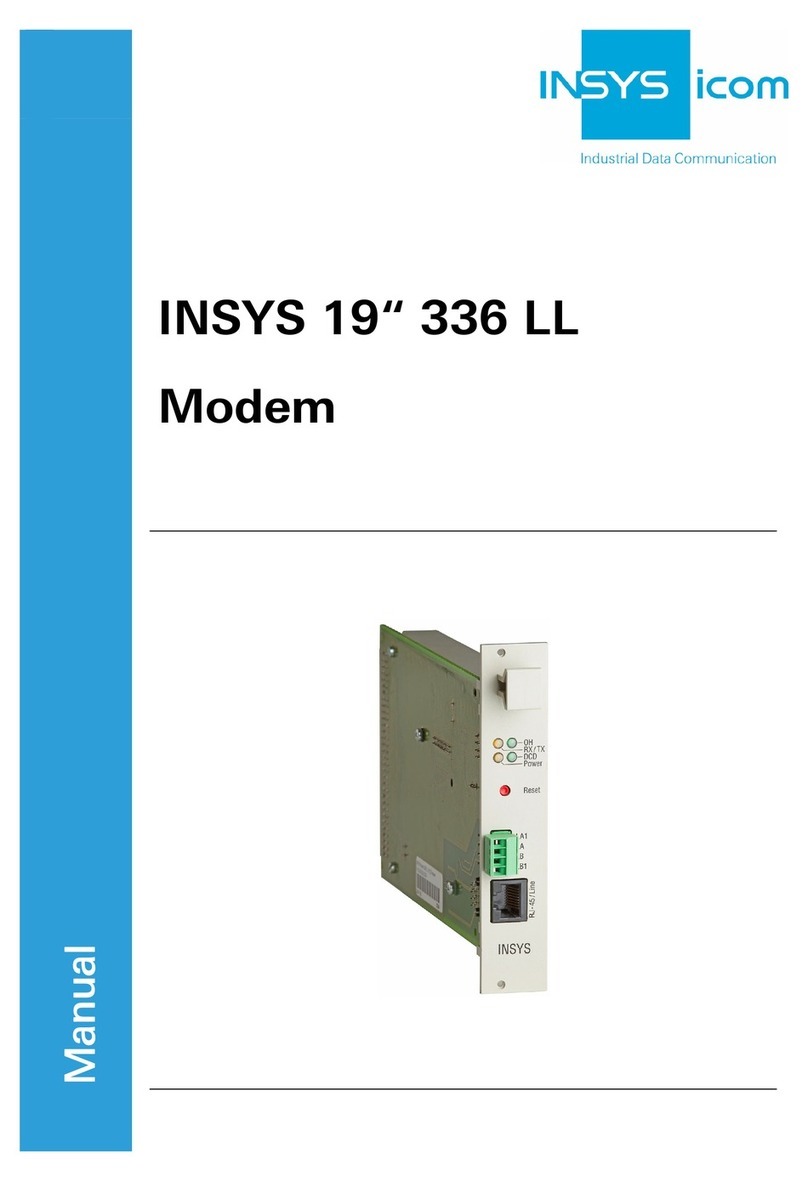
insys icom
insys icom i-modul 336 LL User manual
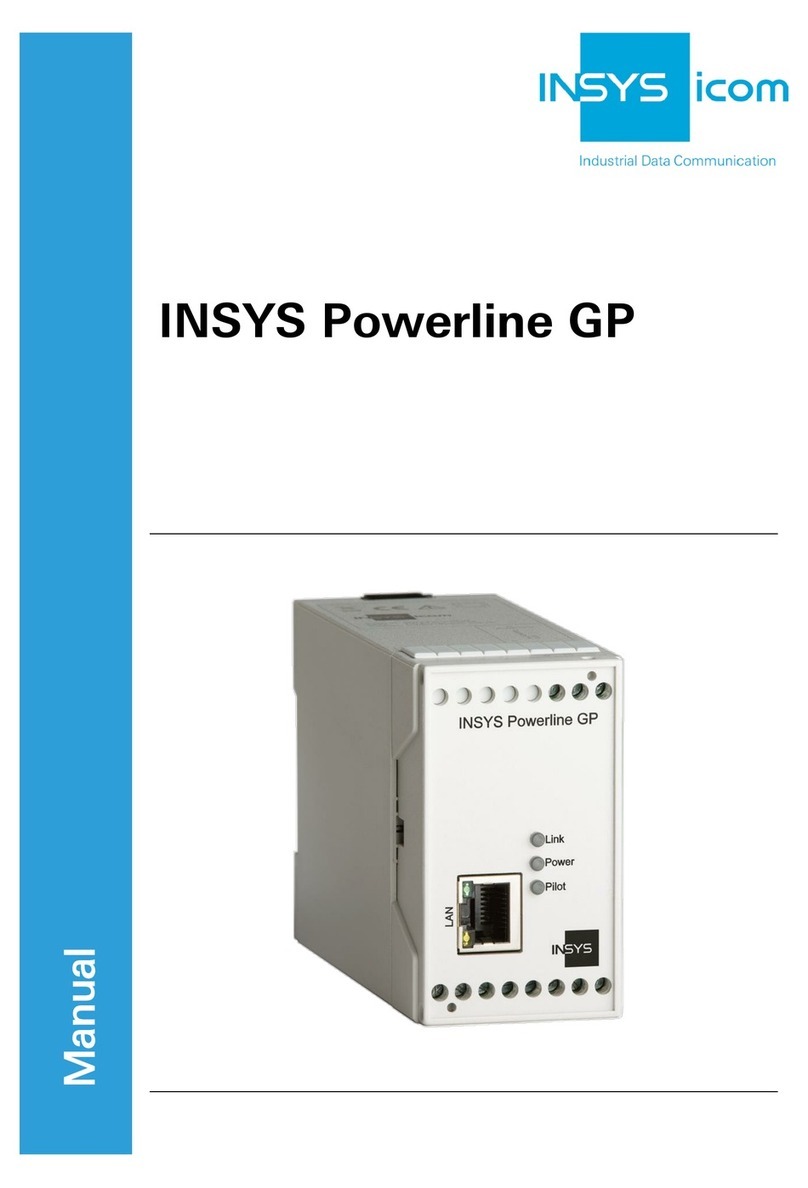
insys icom
insys icom Powerline GP User manual
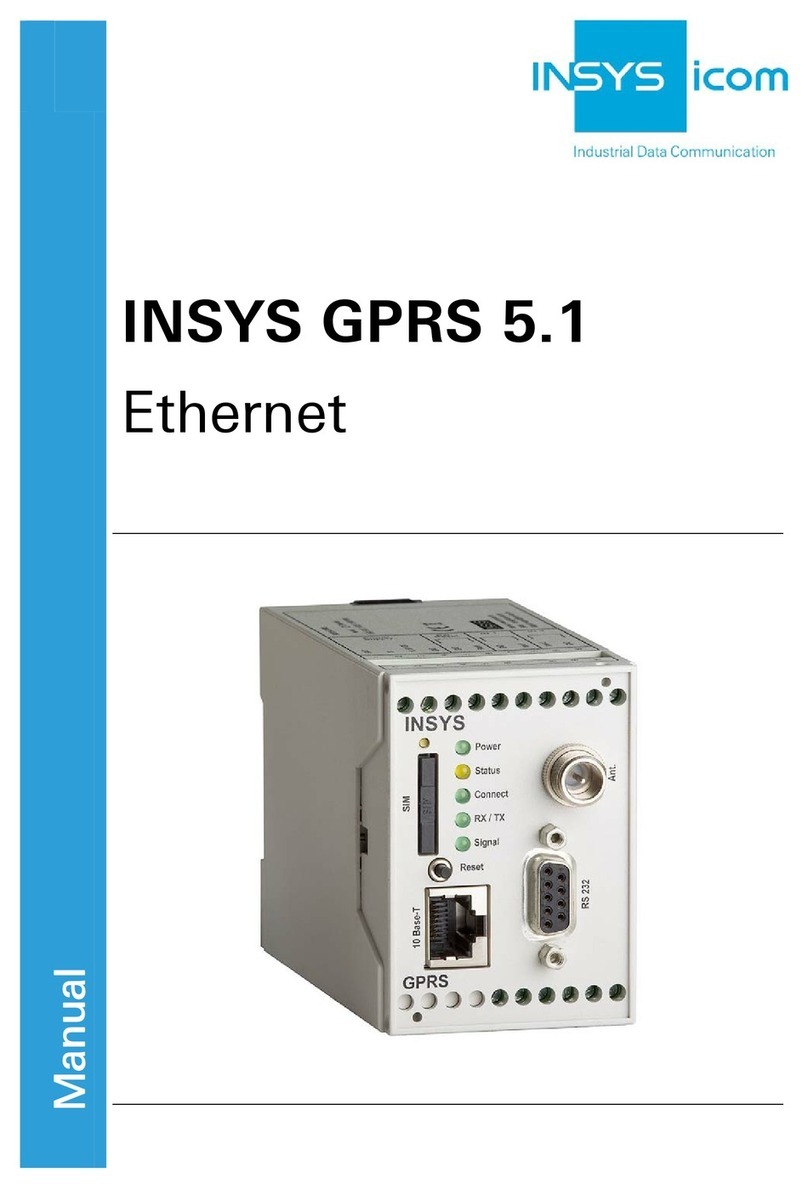
insys icom
insys icom GPRS 5.1 User manual
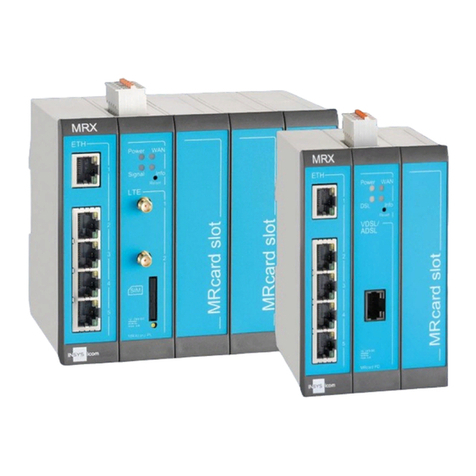
insys icom
insys icom MRX User manual

insys icom
insys icom i-modul 336 LL User manual
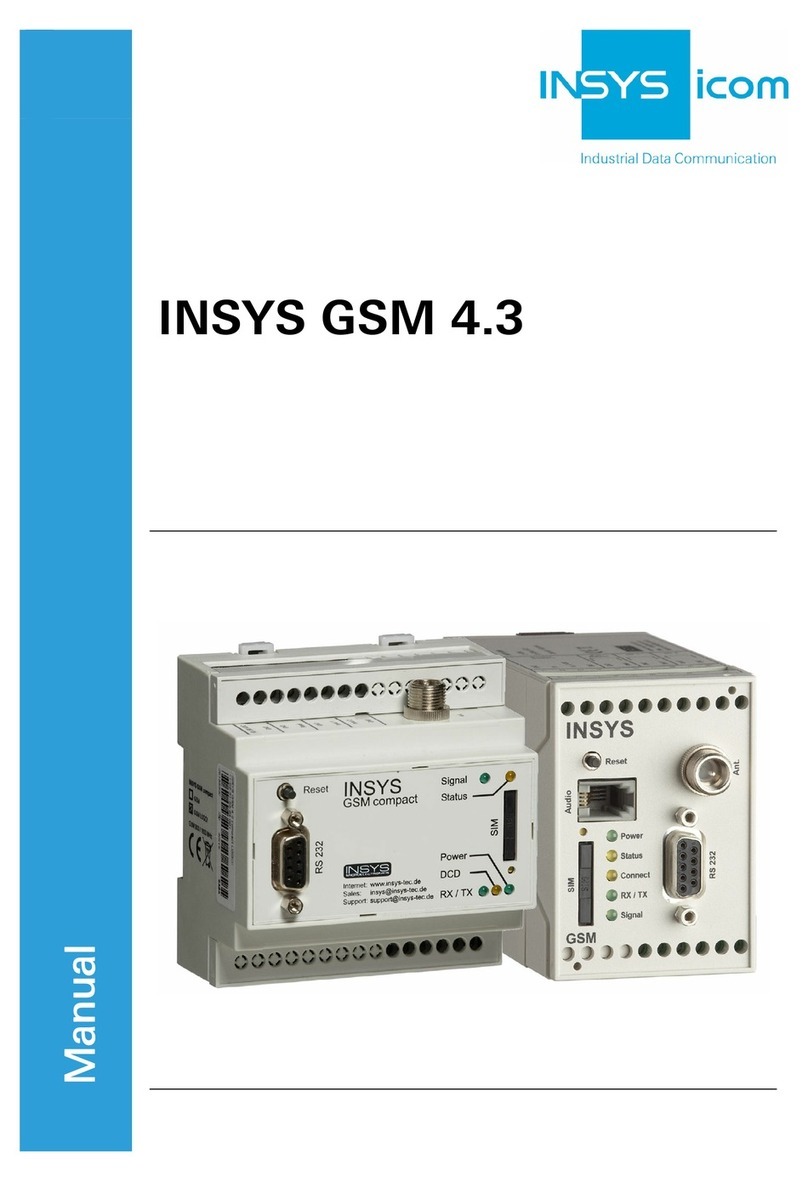
insys icom
insys icom GSM 4.3 compact User manual
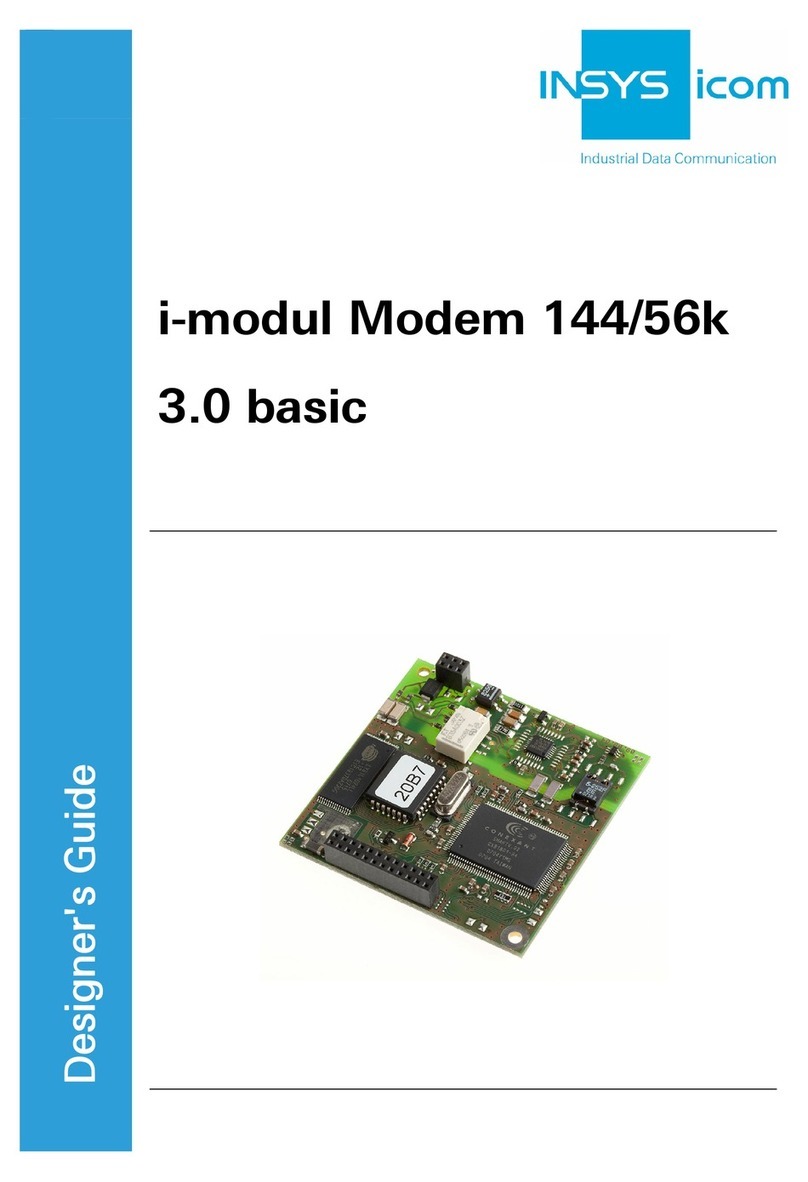
insys icom
insys icom i-modul 144/56k User manual
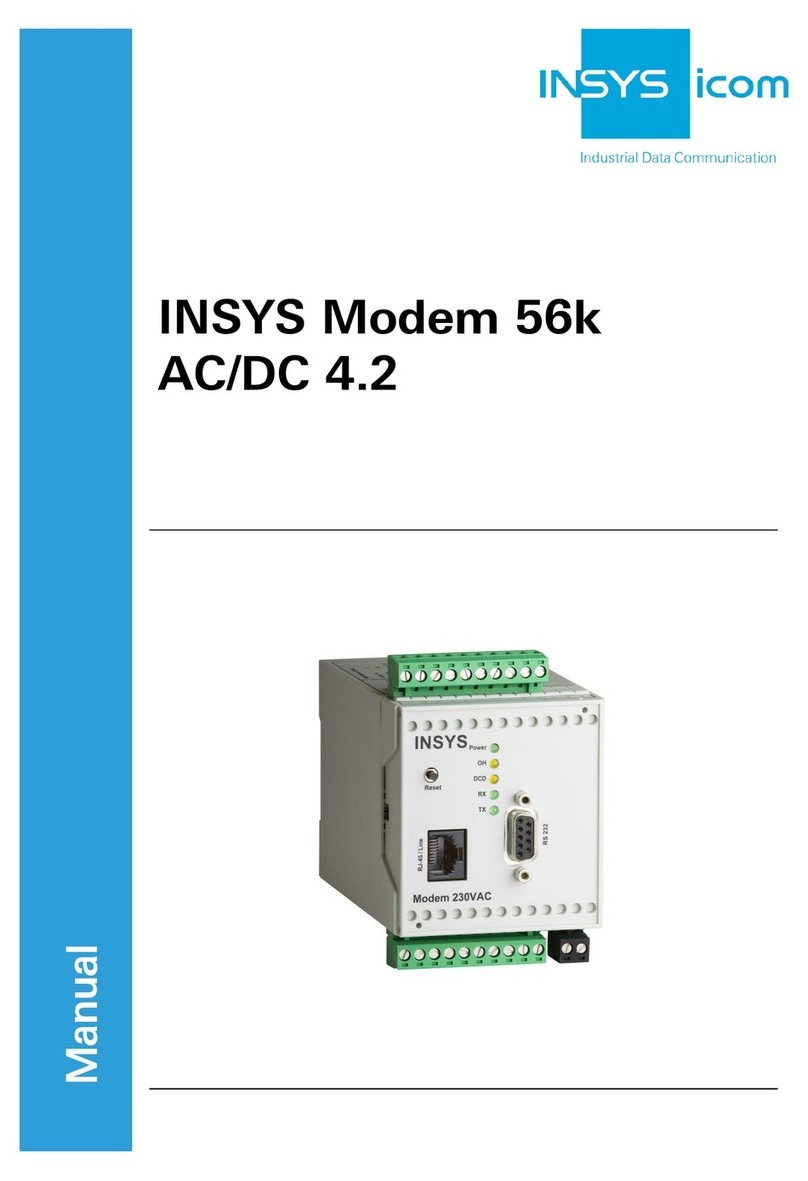
insys icom
insys icom 56k User manual
